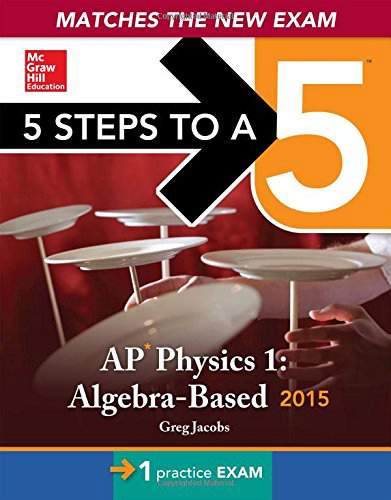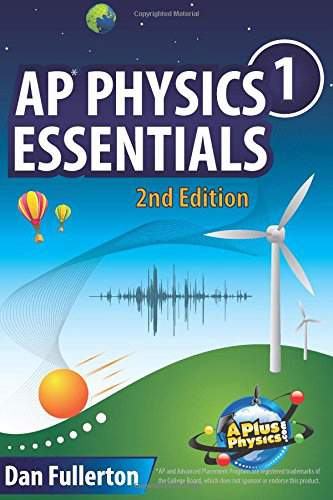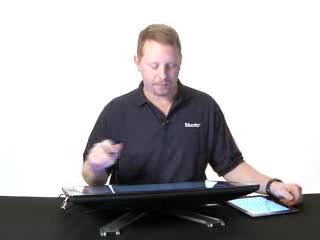Connecting...

For more information, please see full course syllabus of AP Physics 1 & 2
AP Physics 1 & 2 Vectors & Scalars
In physics we have two kinds of numbers: those with and those without a direction. Up until now you’ve most likely only dealt with scalars (2+2, for example). Here, you will understand about vectors. Especially in mechanics and E&M, paying attention to the directions of vectors will be detrimental towards finding the correct solution. Physics is a combination of math and concept thinking, and cannot be done by using one or the other. As you progress, be sure to always bear in mind the reasons for why you’re allowed to do the math you do. Just because you have all the variables you need for a law doesn’t mean you can use that law in that particular situation. Next we’ll start learning some basics in the first topic of physics: mechanics.
Share this knowledge with your friends!
Copy & Paste this embed code into your website’s HTML
Please ensure that your website editor is in text mode when you paste the code.(In Wordpress, the mode button is on the top right corner.)
- - Allow users to view the embedded video in full-size.










































 Answer Engine
Answer Engine



1 answer
Sun Jun 19, 2016 9:54 AM
Post by Saadman Elman on June 18, 2016
This is a great lecture! You clarified a lot of concepts which i was having trouble with. Thanks a lot!
1 answer
Sat Jun 4, 2016 1:16 PM
Post by Summer Breeze on June 4, 2016
Hello Dan, can you please show how A sin thetha (opposite/hypothenus)becomes thetha = sin -1 to the (opposite/hypothenus). Can you please show a step by step of how sin is raised to the negative 1 and (opposite/hypothenus) is raised to the power?
2 answers
Last reply by: Summer Breeze
Mon Jun 6, 2016 4:41 PM
Post by Summer Breeze on June 4, 2016
Hello Dan, you used right angles to explai that lenths and angle can be determined using SOHCAHTOA, but in example 4, I don't understand how vector a is 4mcos30, 4msin30. The triangle in ex 4 is not a right triangle, so why SOHCAHTOA to figure out their size? Can you please draw how you deduced that vector A is 4mcos30, 4msin30.thanks
3 answers
Mon Jun 6, 2016 5:09 PM
Post by Summer Breeze on June 4, 2016
In the soccer ball example, the ball is kicked at an angle 30degrees above the horizontal. Before this course, if someone were to ask me, the length or magnitude of this vector, it would have never occured to me to measure its x and y components. Dan, Could you please explain me why it is important to know the x and y components? This is a strange question, but why isn't enough to use a tape ruler to measure from the point of kick to where the ball stops in the air before it falls to ground (as in the straight line length of the kick)
2 answers
Last reply by: Summer Breeze
Mon Jun 6, 2016 4:37 PM
Post by Summer Breeze on June 4, 2016
Hello Dan, you mentioned that vector Q(2,0,4), how can I tell that a vector has zero point on the y axis. If it were 2 dimentional I would not have a problem visualizing the point that just sits on the x-axis without a y-axis, but this is in the 3rd dimention, it is somewhat hard.
1 answer
Sat Jun 4, 2016 12:23 PM
Post by Fara Sylvain on June 4, 2016
Hello, I have joined this course to learn Physics. I was hoping this course would come with exercise problems and answer sheets. Could you please tell me where I can find exercise sheets and answer sheets and a PDF of the book for this course?
0 answers
Post by Jayden Luis on March 28, 2016
Really awesome! Thanks!
1 answer
Wed Feb 11, 2015 6:30 PM
Post by Adriana Amerson on February 11, 2015
This was a great review with many helpful examples.
1 answer
Mon Sep 15, 2014 5:57 AM
Post by Augusto Ramirez on September 14, 2014
Great Review on Vectors! I really needed this. Thank you. Just had a question on the part where you say Ay=Asin(theta) and Ax=Acos(theta). Does this mean that for the hypotenuse (vector A) = Atan(theta) ?
1 answer
Sun Aug 31, 2014 5:51 AM
Post by George Griffin on August 31, 2014
I meant to say, that this was very rushed and the formulas not angles should have been listed. I feel that I need to find another lecture in order to make sure I have the basics down.
1 answer
Sun Aug 31, 2014 5:51 AM
Post by George Griffin on August 31, 2014
Horrible Lecture! Should have listed the angles necessary to make sure we had the important information to do the problems. Rushed through too much info. I'm skipping to the older guy's lecture who actually seems to take his time.